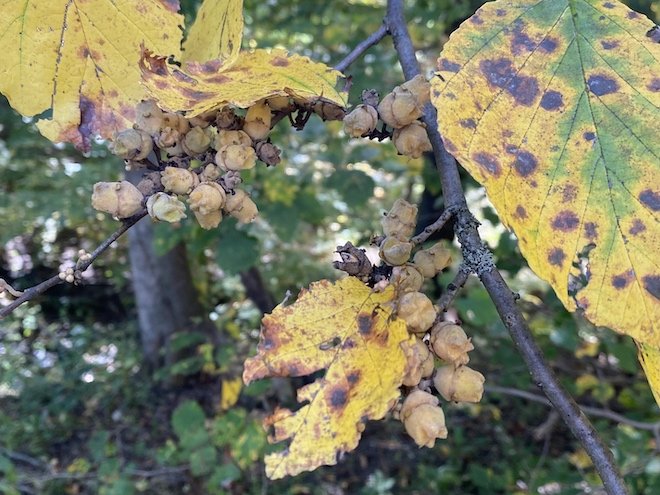This week: American Witchhazel Waits Till Fall
Hello!
’Tis the season for American Witchhazel (Hamamelis virginiana)! It’s one of the few native plants that saves all its action for the end of the year. Small, yellow, crepe-like flowers appear a little after the foliage turns a brilliant gold, and the blooms usually persist into the winter. Around the same time, the plant’s seed capsules burst, propelling pairs of seeds as far as thirty feet away.

American Witchhazel is a common sight in Pennsylvania’s upland forests and woodland edges, and it is native to the eastern half of the United States. It’s also a popular landscaping plant, though spring-blooming hybrids and Asian cultivars are more widely available than the native plant. The straight species can grow anywhere from 10 to 25 feet tall, making it more of a small tree than a shrub, though some shorter cultivars are available. American Witchhazel can handle tough soil conditions, even tolerating road salt—making this a great choice for under power lines or in urban spaces.

If you were wondering if witch hazel, the astringent used on faces and bottoms, was made from Hamamelis virginiana, you’d be correct! European settlers learned about the bark’s medicinal properties from Indigenous Americans, and we’ve been using it ever since.
Settlers also adopted another indigenous practice: the Mohegans of New England used Witchhazel’s forked branches as divining rods to locate underground water sources for wells. This method was used throughout the Western world into the 20th century.
Fall beauty and practical uses aside, American Witchhazel is a gorgeous understory tree year-round and deserves a spot in your landscape!
Elsewhere:
Last year at this time, the newsletter featured a native garden checklist of fall chores. If you forgot to save it for reference, here it is again! One thing I might add—if you have Eco-Grass or a similar low-mow lawn, now is a good time to cut it back before it takes off in the spring!
Have a good week,
Julie